Craving something sweet and a little old-world? These traditional German desserts may sound fancy, but don’t let that fool you—they’re surprisingly simple to make in your own kitchen. From buttery cakes and fruity puddings to jam-filled donuts and nutty holiday cookies, these classic treats prove you don’t need professional training or hard-to-find ingredients to whip up something truly delicious. Whether you’re baking for a crowd or just indulging at home, these 8 easy-to-follow recipes will transport your taste buds straight to a cozy café in Bavaria. Ready to impress without the stress? Let’s get into these German gems.
1. Apfelstrudel
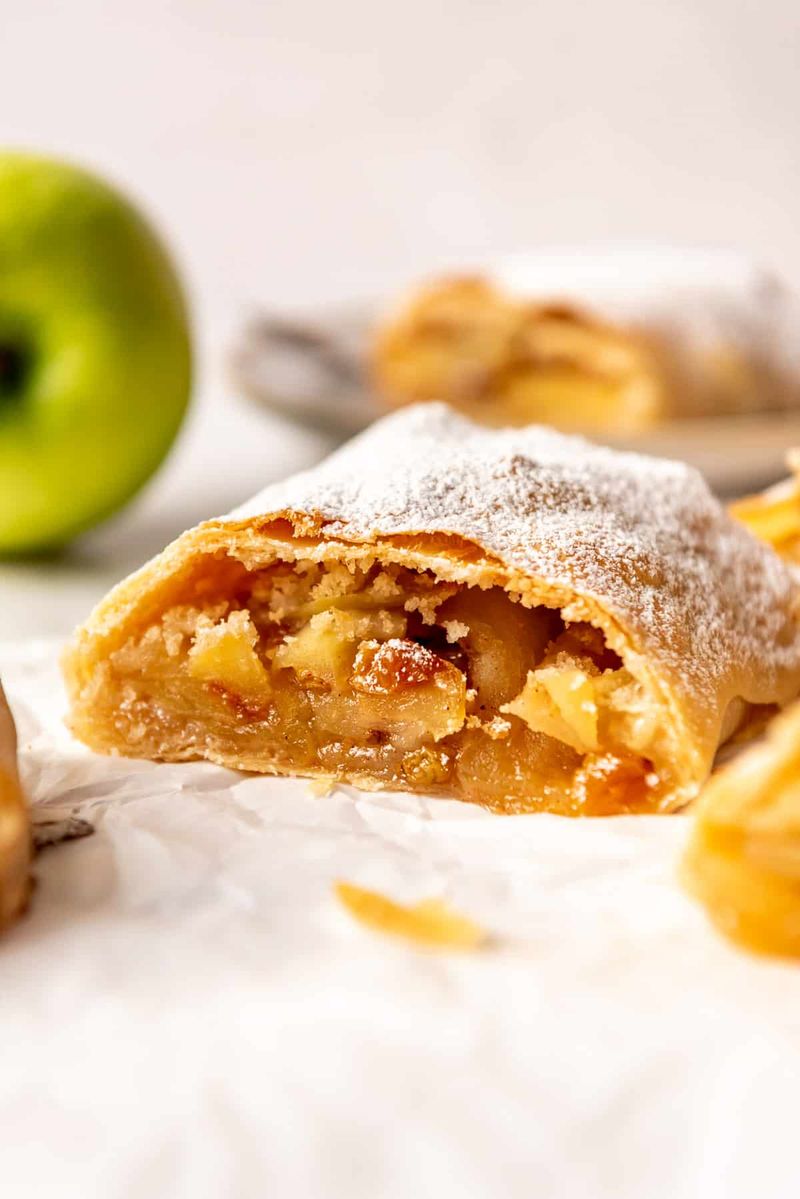
Warm cinnamon-spiced apples wrapped in crispy, paper-thin pastry – that’s the magic of Apfelstrudel. This iconic dessert becomes surprisingly manageable when you use store-bought phyllo dough instead of making pastry from scratch.
The filling combines tart apples, sweet raisins, breadcrumbs, and a blend of warming spices like cinnamon and nutmeg. The breadcrumbs might seem unusual, but they actually absorb excess moisture from the apples, preventing a soggy bottom.
Once assembled, brush the layers with melted butter for that characteristic golden crunch. Serve warm with a dollop of vanilla ice cream or a pour of vanilla sauce for an authentic German experience that will make everyone think you spent hours in the kitchen!
2. Schwarzwälder Kirschtorte
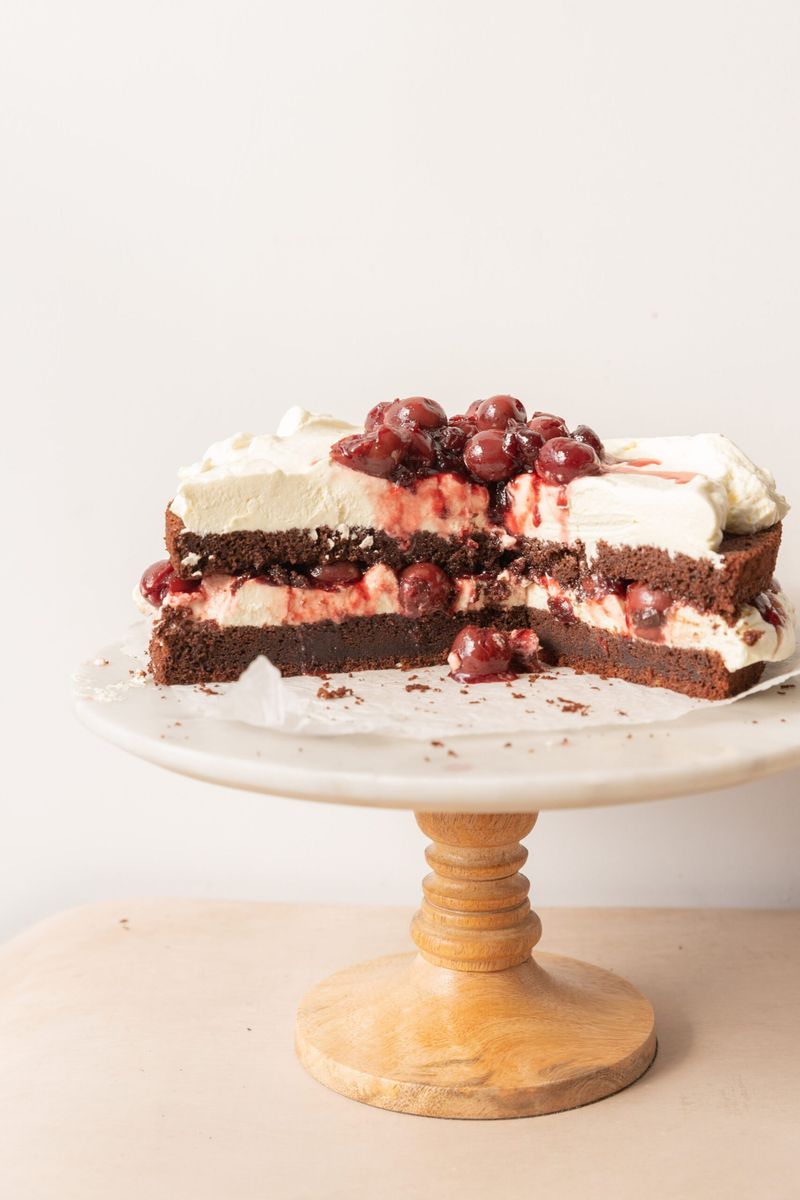
Named after Germany’s Black Forest region, this stunning layer cake combines chocolate, cherries, and cream in perfect harmony. Don’t let its elegant appearance fool you – with a simple chocolate sponge cake as your base, assembly is straightforward.
The secret to authentic flavor lies in the cherry brandy (Kirsch) that soaks into the cake layers and flavors the whipped cream. Can’t find Kirsch? A splash of cherry juice works in a pinch. The classic decoration features chocolate shavings and plump cherries on top.
For beginners, store-bought cherry preserves save time without sacrificing flavor. Make it a day ahead – the flavors meld beautifully overnight, and the cake becomes even more moist and delicious!
3. Bienenstich
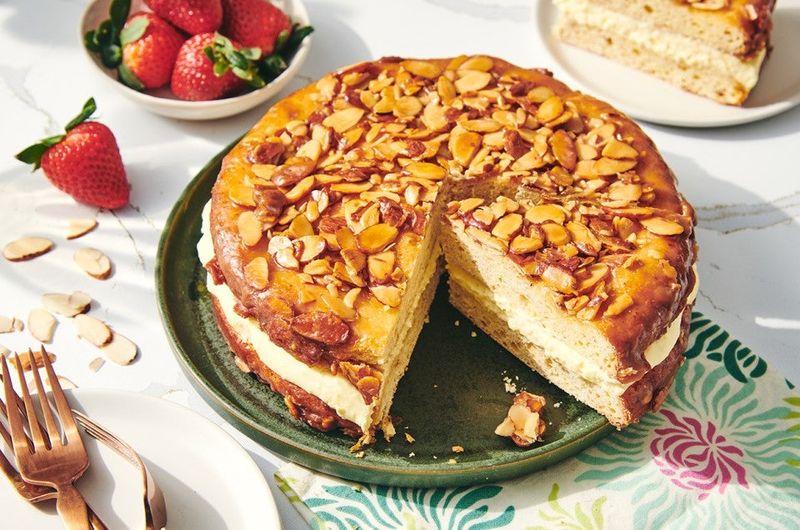
Golden honey and toasted almonds crown this delightful “Bee Sting” cake. Legend says it got its name when a baker was stung by bees attracted to the sweet honey topping! Despite its impressive appearance, this yeasted cake requires minimal effort.
The magic happens during baking when the almond-honey mixture caramelizes into a crunchy, sweet topping. Below lies a tender vanilla cake, split and filled with smooth custard cream. The contrast between the creamy filling and crunchy topping creates an irresistible texture adventure.
Make the components in stages – prepare the dough and topping one day, then fill with custard the next. For an easier version, quality instant vanilla pudding can replace the traditional custard without sacrificing that authentic taste.
4. Rote Grütze
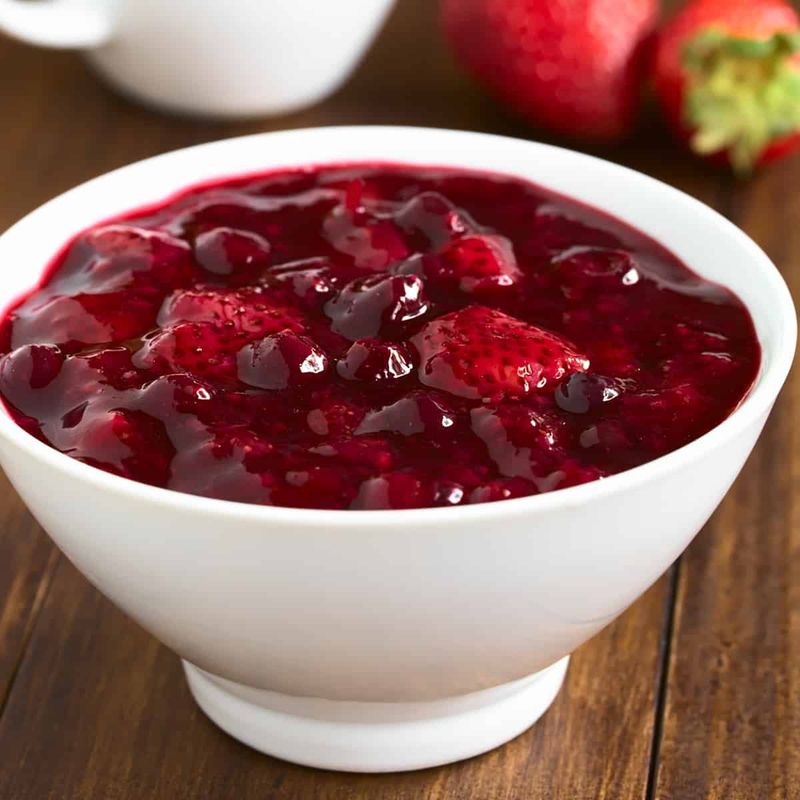
Ruby-red and bursting with berry goodness, Rote Grütze showcases summer fruits at their finest. This refreshing Northern German dessert transforms simple ingredients into a spectacular treat that brightens any table.
A medley of red berries – strawberries, raspberries, cherries, and currants – simmer briefly with sugar before being thickened with a little cornstarch or gelatin. The result? A gorgeous, jewel-toned pudding that balances sweet and tart perfectly.
Traditionally served chilled with a generous pour of vanilla sauce or fresh cream, this dessert takes just minutes to prepare. Make it when berries are in season for the best flavor, or use frozen fruit for a taste of summer any time of year. It’s a light finish to any meal!
5. Pflaumenkuchen
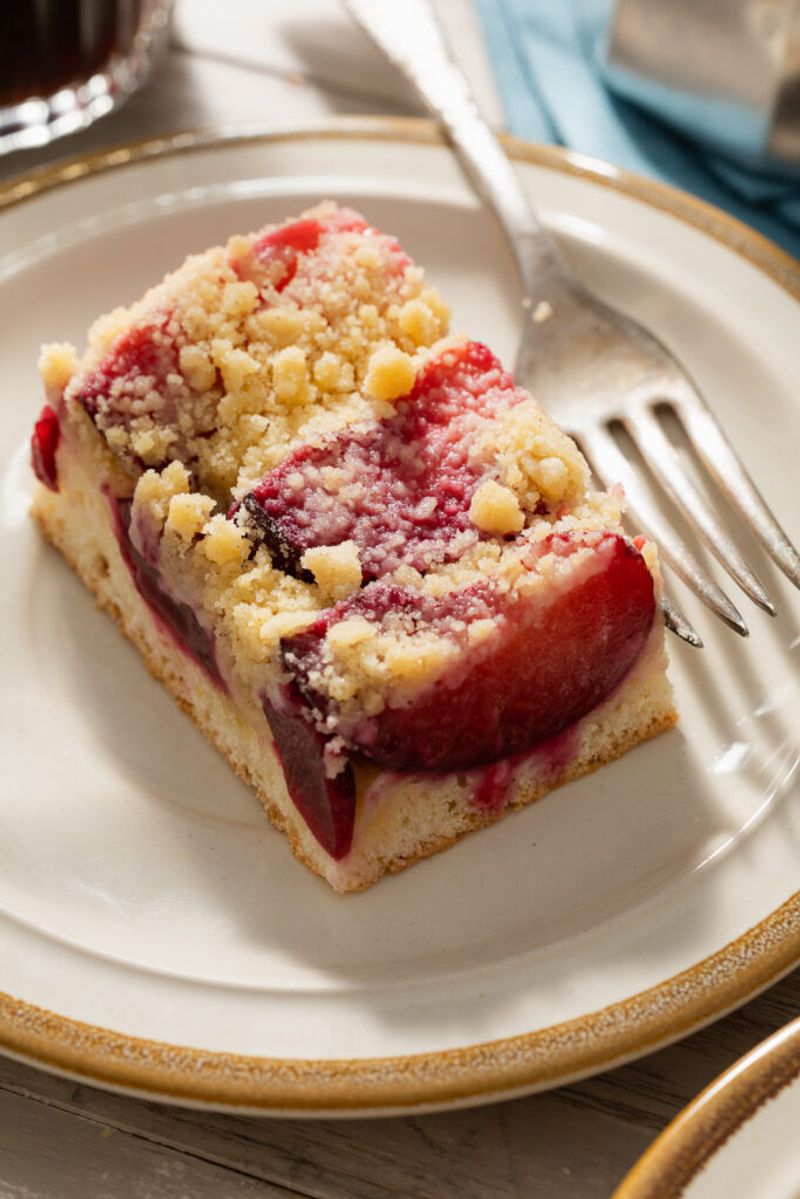
Late summer brings plums to German markets, and with them comes Pflaumenkuchen – a simple, rustic cake that celebrates these juicy fruits. The beauty of this dessert lies in its straightforward preparation and stunning presentation.
A buttery yeast or shortcake base provides the perfect foundation for rows of halved plums, their cut sides facing up. As the cake bakes, the plums soften and release their ruby juices, creating pockets of jammy goodness. Some bakers add a sprinkle of streusel on top for extra sweetness and crunch.
Dust with powdered sugar just before serving for a picture-perfect finish. This cake tastes even better the next day, making it ideal for busy bakers who want to prepare dessert ahead of time.
6. Zimtsterne
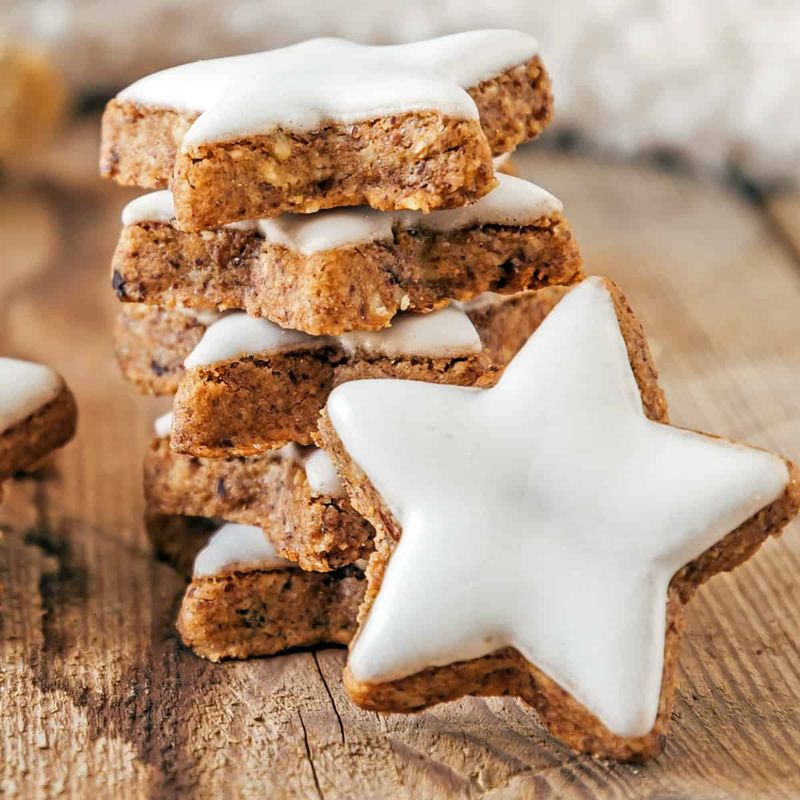
Sparkling like snow-dusted stars, Zimtsterne cookies appear on German holiday tables every December. These naturally gluten-free treats rely on ground almonds instead of flour, making them wonderfully chewy with a distinctive marzipan-like texture.
Cinnamon takes center stage in the flavor profile, warming every bite with its aromatic spice. The dough comes together quickly – just mix ground almonds, sugar, egg whites, and cinnamon until it forms a workable mass.
The signature white glaze, made from stiffly beaten egg whites and sugar, creates a beautiful contrast against the brown cookie. Though traditionally Christmas treats, these star-shaped delights are too delicious to save for just one season. Their simple ingredient list and straightforward preparation make them perfect for baking with children!
7. Krapfen
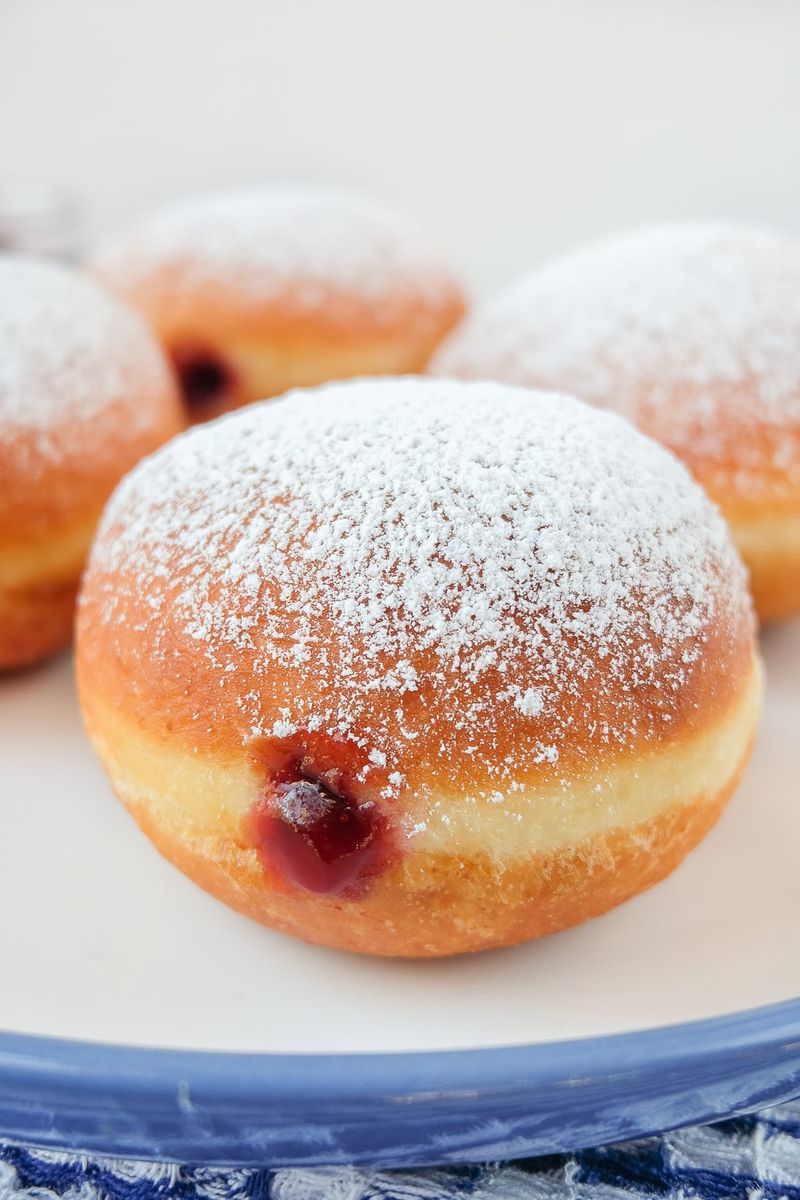
Carnival season in Germany brings Krapfen to bakery windows everywhere – puffy yeasted donuts with surprise jam centers. While they look impressive, these treats require just basic pantry ingredients and a bit of patience for the rising time.
The soft, airy dough puffs up beautifully when fried, creating a light texture that melts in your mouth. After cooking, each donut gets injected with sweet jam – traditionally raspberry or apricot – and dusted generously with powdered sugar.
A clever baker’s trick: place donuts upside-down on cooling racks after frying. This creates the characteristic white ring around the middle that marks an authentic Krapfen. Serve these fresh for breakfast or afternoon coffee for an instant mood boost that channels German bakery magic!
8. Butterkuchen

Sometimes called ‘German Coffee Cake,’ Butterkuchen proves that simplicity can be spectacular. This humble yeasted sheet cake celebrates butter in its purest form – lots of it, dotted generously across the top before baking.
The magic happens in the oven when the butter melts into the dough, creating little wells that fill with a sweet mixture of sugar and sliced almonds. Each bite offers a perfect balance of tender cake and crispy, caramelized edges.
No fancy equipment needed – just a baking sheet and your hands to dimple the dough. Serve slightly warm with afternoon coffee for an authentic German experience. This unfussy cake keeps well for several days, though it rarely lasts that long before being devoured by appreciative family members!
Leave a comment